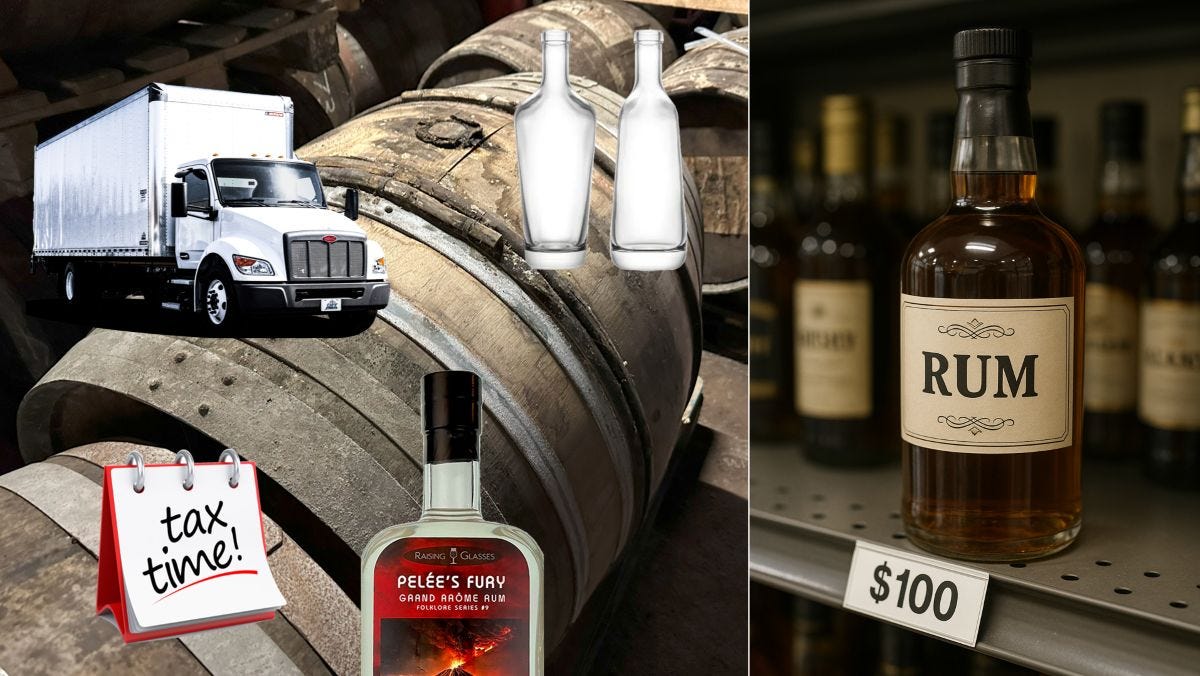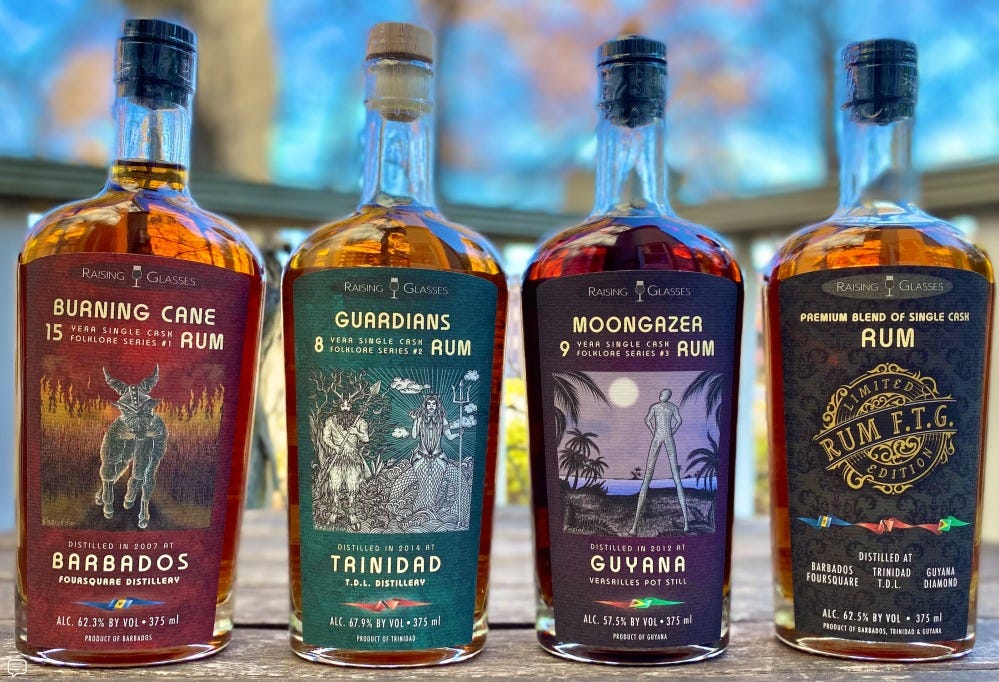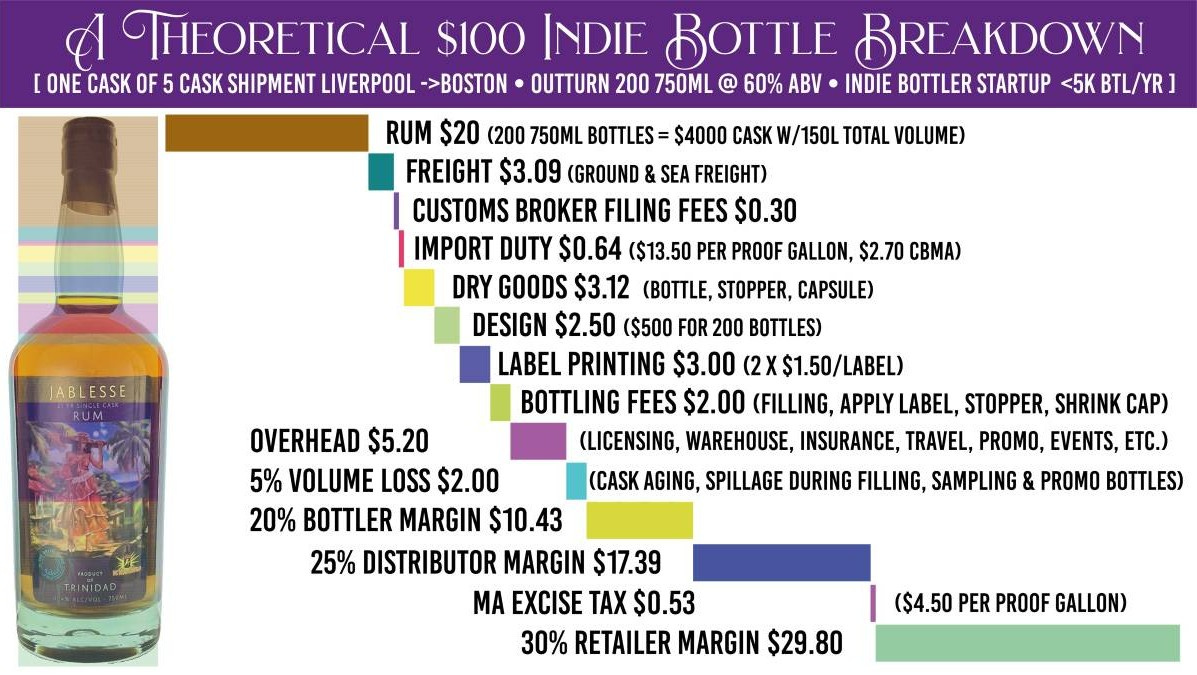Why does that Indie-Bottled Rum Cost $100?
To the typical rum geek, becoming an independent rum bottler might seem like a dream job. Drinking rare and exotic rums and selecting the best to sell at (sometimes) eye-watering prices. Viva la profit!
Not so fast.
For Miami Rum Congress 2025, I organized and hosted a panel titled “Independent Bottlers – Behind the Scenes.” Among the panelists was John Hsu, co-founder of Raising Glasses, a Massachusetts-based independent rum bottler. Since jumping into the rum game in 2022, Raising Glasses has become known for its exotic rum picks and strikingly colorful labels.
While assembling the panel, I asked John to discuss the expenses and profits of bringing a typical $100 indie-bottled rum to market. John went well beyond my request, creating an infographic that was surprisingly detailed and equally surprising. With John’s permission, I’ve included it here.
For those unfamiliar with US liquor distribution, brands (generally speaking) can’t sell directly to consumers or bars. Instead, a bottle of rum must pass through three tiers. The first tier, e.g., Raising Glasses, sells the product to a distributor. The distributor then sells the product to bars, restaurants, and stores. Naturally, distributors and retailers mark up the price of the product when they resell it.
If we lump together costs in the same stage, the $100 breaks down like this:
Rum acquisition: 24%
Bottling and preparing for sale: 10%
Business overhead: 7%
Distributor and retailer markup: 48%
Brand (bottler) profit: 10%
Wow! On a $100 bottle of rum, the brand makes just $10 or so. To make that profit, they spend $40 and then hope they’ll eventually recoup it, along with some profit.
You might look at the infographic and think that some amounts seem high. However, Holmes Cay’s Eric Kaye concurred with the overall accuracy of John’s numbers. You have to remember that an independent bottler doesn’t sell one product over and over. Instead, they release a series of limited-edition products. Each release requires a new label to be designed, and only a few hundred labels are printed. Economies of scale don’t apply here.
However, John notes that certain things could be scaled up to save costs. For example, shipping one or two casks is much more expensive per liter than a 20,000-liter ISO tank. But with larger purchases come larger initial outlays and associated financial risks.
Sure, a brand could buy bottles and blank labels in larger quantities, thereby shaving a dollar or two off its costs. However, with 75% of the $100 going to the rum supplier, distributor, and retailer, at best, a brand’s $10 profit might become $12, or so.
Faced with these challenging economics, it’s not a matter of why there are so few US-based indie rum bottlers. Instead, it’s why anyone takes up the challenge. I’ll have more to say about this in a follow-up story.







Seems like crowdfunding a bottling to ship straight to the rum heads that are into this sort of thing could get around some of these costs.
Wow!
I start to understand why high quality Caribian Rum (not the Bacardi stuff) is much cheaper in EU that in US, and why more brands seem to be available here in Europe.
Or are these problems comparable in Canada (Your home country) ore the European Union (my home)?
Is this the reason even an american Independent Distiller like Raising Glasses imports Caribian Rum from the European wholesaler and blender A&E Scheer, not from an American or Caribian one?